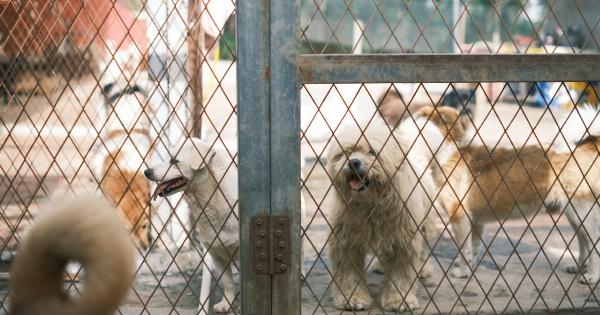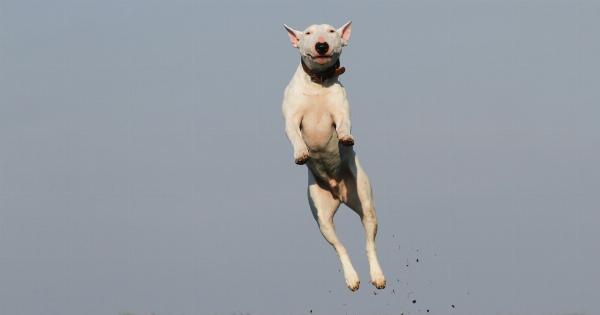As dog owners, it’s crucial for us to understand our furry friends’ body language and behavior.
Our dogs cannot verbally communicate their feelings, thoughts, or needs like humans do, but they have their own unique ways of expressing themselves. Two common behaviors that hold significance are nose licking and tail tucking. In this article, we will delve into these behaviors and help you decode what your pooch may be trying to tell you.
The Hidden Messages of Nose Licking
Nose licking, also known as “tongue flicking,” is a behavior that dogs frequently display. While it may seem like a simple action, it can convey various messages depending on the context. Here are some possible meanings behind nose licking:.
1. Stress or Anxiety
If your dog licks their nose excessively and in situations where they seem uncomfortable, stressed, or anxious, it might suggest that they are trying to calm themselves down.
Dogs often lick their noses in an attempt to self-soothe, similar to humans taking deep breaths to relax.
2. Submission and Respect
Nose licking can also be a sign of submission and respect towards their owners, other dogs, or even new people. Dogs may lick their noses to show that they acknowledge a higher-ranking individual and mean no harm or challenge.
3. Appeasement and Avoiding Conflict
When a dog licks their nose while interacting with other dogs, humans, or unfamiliar situations, it can indicate a desire to diffuse tension and avoid conflicts.
Nose licking is a way for dogs to communicate that they mean no harm and want to maintain a peaceful environment.
4. Medical Concerns
While nose licking generally conveys emotional or social cues, it is essential to consider potential medical causes as well.
If your dog suddenly starts excessively licking their nose without any apparent reason and it persists for an extended period, it might be worth consulting with a veterinarian to rule out any underlying health issues.
Understanding the Tale of a Tucked Tail
Tail tucking, as the name suggests, refers to the behavior when a dog pulls their tail tightly between their hind legs. It is often associated with negative emotions such as fear, anxiety, or stress.
Let’s explore the possible meanings behind a tucked tail:.
5. Fear and Anxiety
One of the primary reasons dogs tuck their tails is fear or anxiety. When exposed to frightening or threatening situations, dogs may tuck their tails as a protective mechanism to make themselves appear smaller or less threatening.
It’s essential to address the source of their fear and provide reassurance.
6. Nervousness and Insecurity
Tail tucking can also indicate nervousness and insecurity in dogs. Some dogs may tuck their tails when encountering new environments, meeting unfamiliar individuals, or experiencing situations that are outside their comfort zone.
Patience, positive reinforcement, and gradual exposure can help build their confidence.
7. Emotional or Physical Pain
In some cases, a tucked tail might be a sign that your dog is in emotional or physical pain.
If your dog is not displaying any obvious source of fear or anxiety, it’s crucial to monitor their behavior and consult a veterinarian if the tail remains tucked for an extended period or is accompanied by other concerning symptoms.
8. Submission or Avoidance of Conflict
Similar to nose licking, a tucked tail can signify submission and a desire to avoid conflict. It is a dog’s way of communicating that they mean no harm and are not a threat to others.
They try to appease and make themselves less noticeable to ensure a harmonious environment.
Building a Stronger Bond with Your Pooch
Understanding these subtle forms of communication from your dog can strengthen the bond you share.
When you can interpret their nose licking or tail tucked behaviors accurately, you can respond appropriately and provide the support or reassurance they need.
Remember, every dog is unique, and while these behaviors may have general meanings, it’s essential to consider the specific context and your dog’s overall body language.
By observing and learning from your pooch, you’ll become even more in tune with their needs and emotions.






























